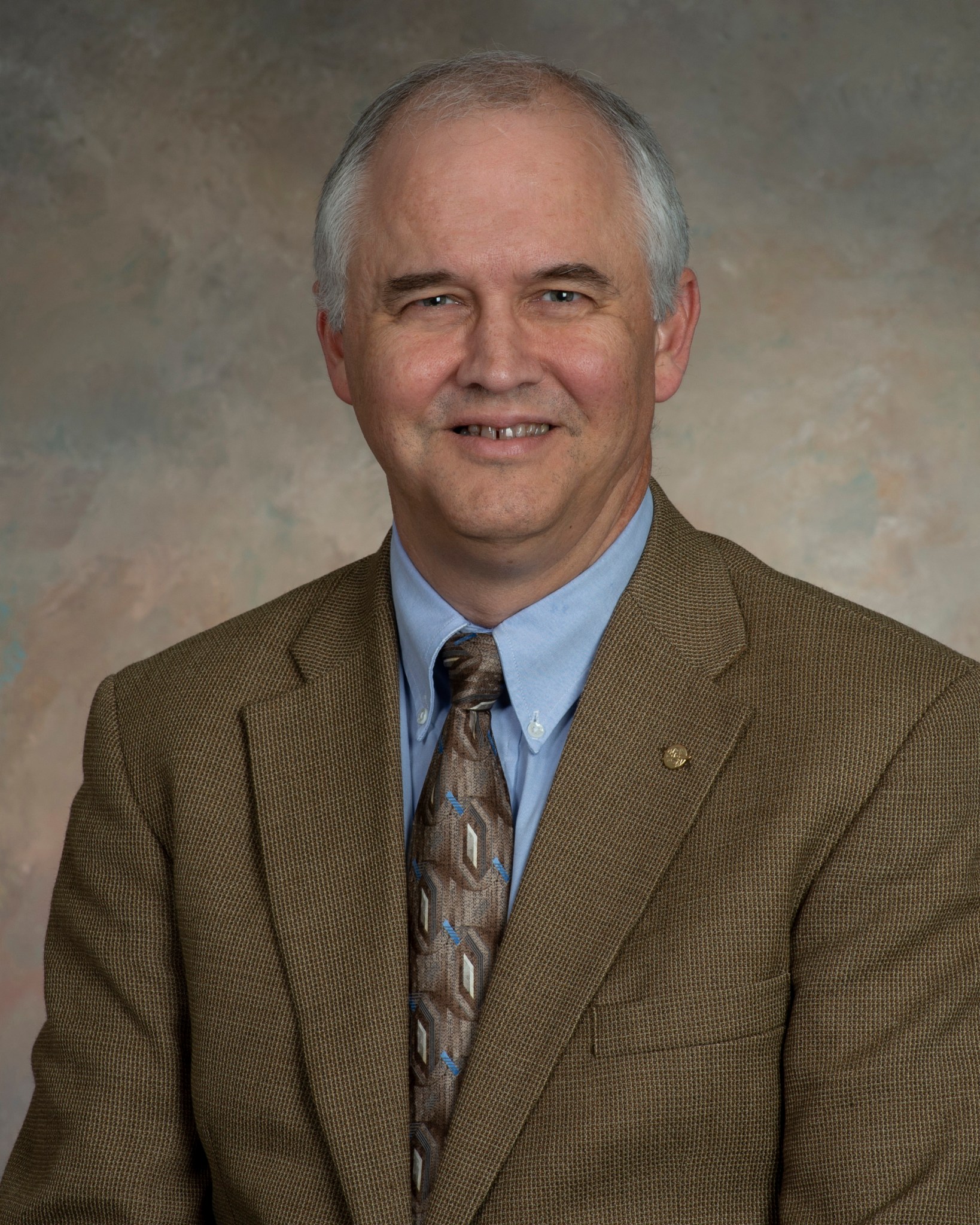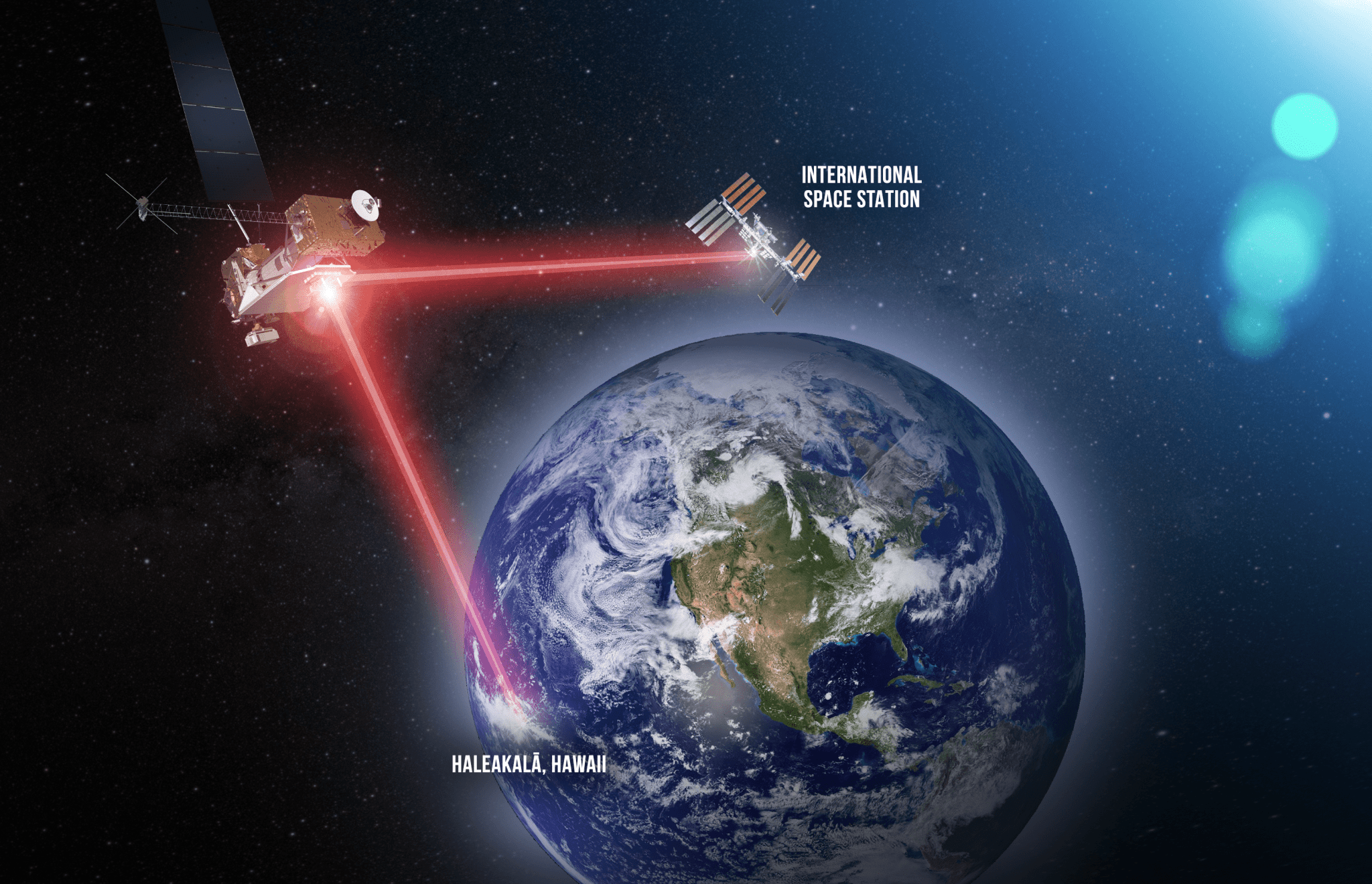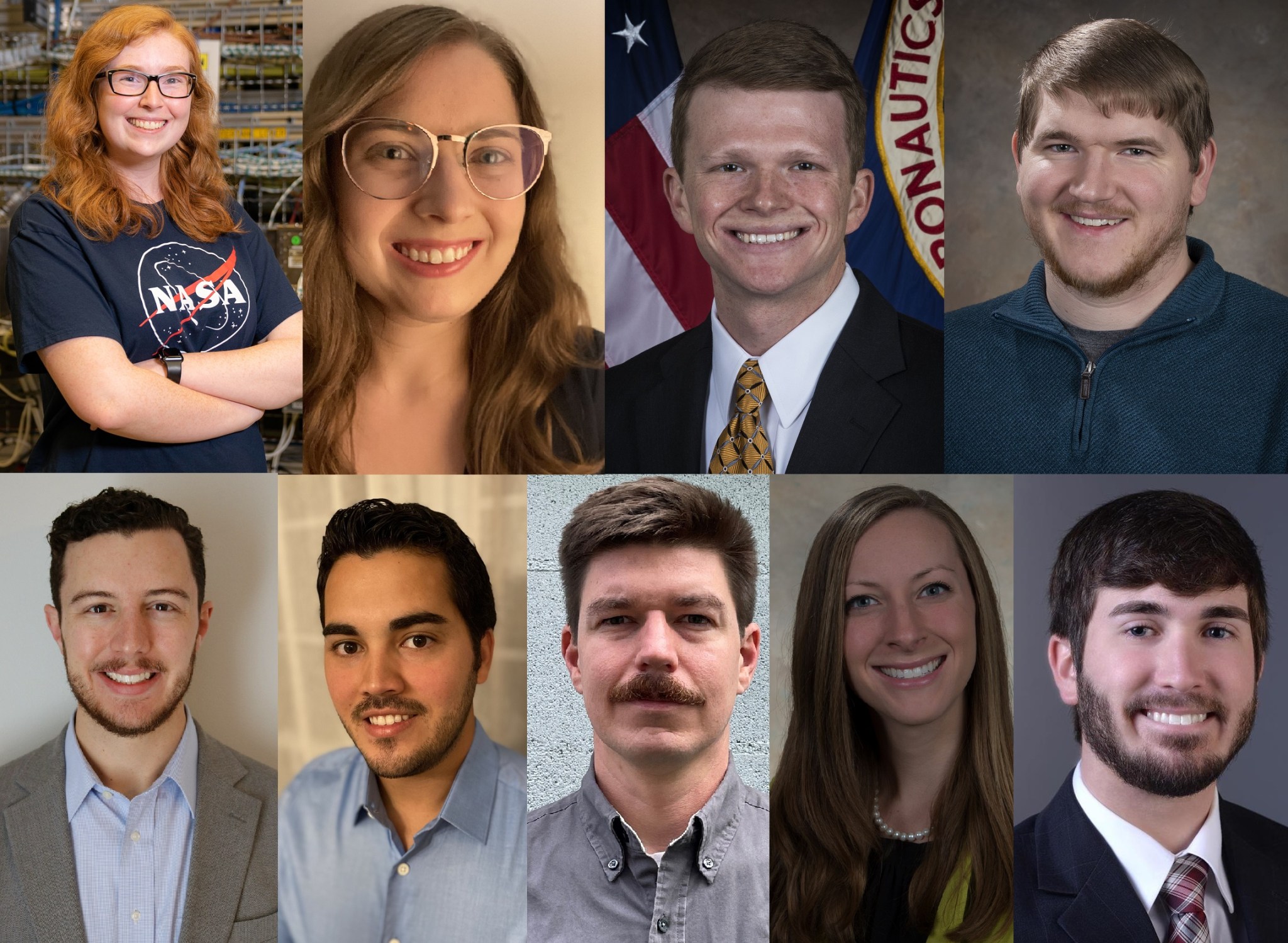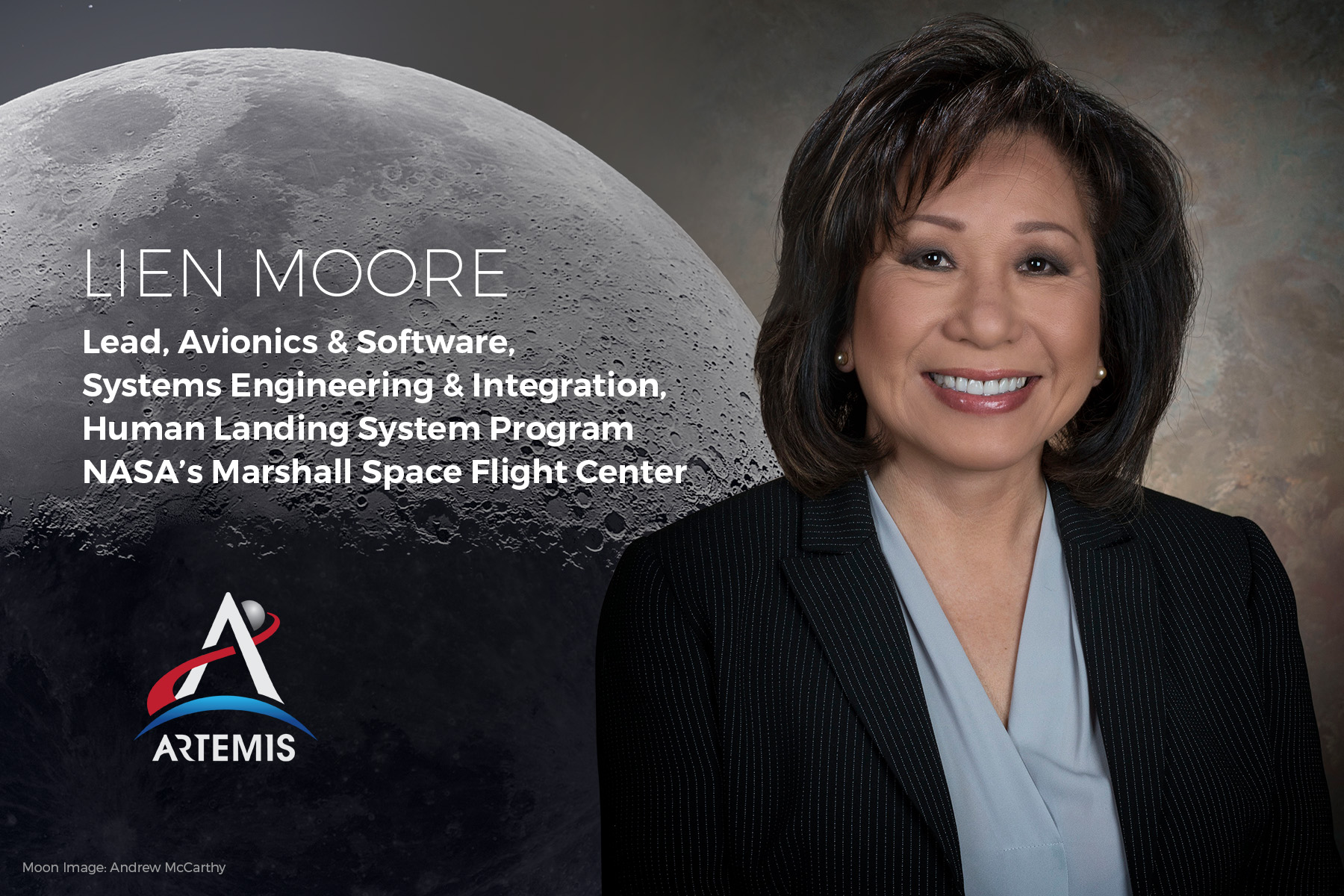Marshall Mission Manager Helping to Ensure Success for Laser Communications
By Taylor Goodwin
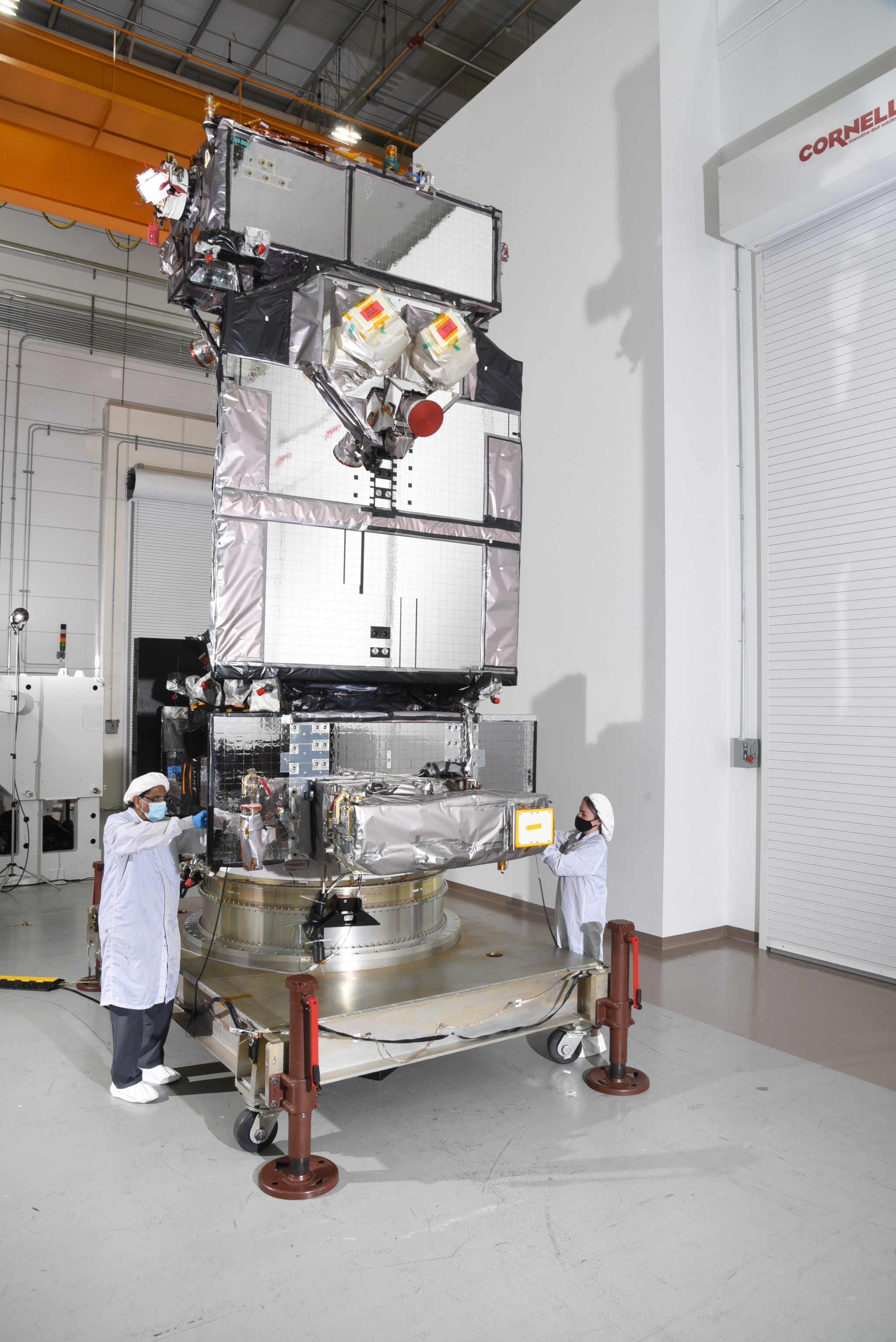
Radio waves have been used in space communications since the beginning of space exploration and are currently used in the majority of NASA missions. Now, NASA is enhancing data transmissions using light waves – the Laser Communications Relay Demonstration.
As space exploration has evolved, so has the need for advanced communications technologies with the ability to transfer data at higher speeds. As more data is generated and collected in missions, a higher bandwidth is required to send that data to Earth. LCRD is testing the unique capabilities of optical communications, which could increase bandwidth 10 to 100 times more than radio frequency missions.
Although this technology demonstration payload is roughly the size of a standard king-sized mattress, an operational system will be able to reduce size, weight, and power requirements for a satellite’s communications equipment. This will mean less expensive launches with more room for science instruments and a lower impact on the spacecraft’s batteries.
Developed and led by NASA’s Goddard Space Flight Center, LCRD is scheduled to launch on an Atlas V rocket from the Cape Canaveral Space Force Station in Florida Dec. 5 with a two-hour launch window that opens at 3:04 a.m. CST.
LCRD is funded by the Space Technology Mission Directorate’s Technology Demonstration Missions program, which is located at Marshall Space Flight Center. Tim Smith serves as the program’s mission manager at Marshall for LCRD, helping to ensure this technology demonstration mission will be a success.
“The Technology Demonstration Missions program at Marshall is essentially the eyes and ears for the Space Technology Mission Directorate,” Smith said. “Within our portfolio, we assess risk and technical performance throughout each project life cycle. Our role is to ensure that the project has what it needs to be successful.”
Once in orbit, engineers located at LCRD’s mission operations center at NASA’s White Sands Test Facility will activate the payload and prepare to begin transmitting data over infrared lasers.
Until its first user is launched, LCRD will practice sending test data – including spacecraft health data; tracking, telemetry, and command data; and sample user data – to ground stations to ensure proper operation. The test data will be sent up through radio frequency signals from the mission operations center, and LCRD will reply over optical signals.
“NASA has relied on radio frequency communications for a long time,” Smith said, “and now we will be able to compound the old and the new. With optical communications supplementing radio frequency signals, missions will have unparalleled communications capabilities. If we can get 10 times the amount of data down per second, the discoveries that are made from the data can be accelerated.”
Missions in space will send their data to LCRD, which will relay the data down to designated ground stations on Earth. LCRD creates a continuous path for data flowing from missions in space to ground stations on Earth, making a complete end-to-end system. The ability to send and receive data from missions and the ground stations makes the system two-way. Together, these capabilities make LCRD the agency’s first two-way, end-to-end optical relay.
One of LCRD’s first operational users will be the Integrated LCRD Low-Earth Orbit User Modem and Amplifier Terminal, a payload that will be hosted on the International Space Station. The terminal will receive high-resolution data from experiments and instruments aboard the space station and transfer the data to LCRD, which will complete the transmission back to Earth at rates of 1.2 gigabits per second over optical links. This is almost double the rates of the 2013 Lunar Laser Communications Demonstration, which downlinked data from the Moon over an optical signal at the rate of 622 megabits per second.
NASA’s Technology Demonstration Missions infuses cost-effective, revolutionary new technologies such as those demonstrated by LCRD into NASA, government, and commercial space missions.
“As we work to establish a sustainable presence on the Moon and send humans to Mars, technology demos like LCRD will let us take advantage of laser communications systems for those missions,” said Tawnya Laughinghouse, program manager of Technology Demonstration Missions. “These missions will empower NASA to use advanced technology for future exploration.”
Along with the Goddard team leading the LCRD mission, its partners include NASA’s Jet Propulsion Laboratory and the MIT Lincoln Laboratory in Lexington, Massachusetts.
The mission was made viable through a partnership between the U.S. Space Force, the Department of Energy, and NASA. LCRD is a payload aboard the Department of Defense’s Space Test Program Satellite 6, part of the third Space Test Program mission, or STP-3. STP-3 is a co-manifested spacecraft launch mission managed by the Space Force’s Space and Missile Systems Center. The STP-3 mission matures technology and reduces risk for the U.S. Air Force, Space Force, and other defense and civil partners.
Learn more and experience NASA’s journey to the LCRD launch on Inside Marshall.
Goodwin, an LSINC employee, supports Marshall’s Office of Strategic Analysis & Communications.
Nine Team Members Receive NASA Trailblazer Awards
By Rick Smith
Nine team members at NASA’s Marshall Space Flight Center were among the early-career engineers, scientists, and support personnel honored Nov. 16 during NASA’s Space Flight Awareness Trailblazer Awards ceremony.
The awards, presented in a virtual ceremony encompassing all NASA field centers, are presented annually to honor civil service employees and NASA contractors who demonstrate exemplary performance during the first seven years of their career.
Marshall award recipients included: engineers Hannah Hopkins, Erin Lanigan, Patrick Mills, Christopher Roberts, Reid Ruggles, Brian De León Santiago, and Thomas Steva, all of the Engineering Directorate; Ari Dutton, an engineering project manager in the Habitation Systems Development Office; and Mathew Doss, a budget analyst in the Office of the Chief Financial Officer.
Marshall Associate Director Steve Miley praised the Marshall award recipients during the online ceremony.
“You are the next generation of Marshall leaders – true problem-solvers, innovators, leaders, hard workers, and team players,” Miley told them. “What you do has a huge impact on all our missions. Your critical work pays forward to the goals this agency and our center are pursuing.”
NASA astronaut Victor Glover, pilot of the first operational flight of the SpaceX Crew Dragon to the International Space Station, also offered encouragement and thanks.
“Each of us is affected by the choices we make in our careers,” Glover told awardees. “Your management has recognized you as an outstanding contributor to the space program – a true trailblazer. Your creative initiative and willingness to do things differently, or to adapt to change, is directly connected to our well-being and success.”
Marshall honorees were recognized for a variety of unique contributions, including the following:
- Hannah Hopkins: Exceptional engineering efforts in the design, development, and testing of simulation software and software tools, and for leadership of Marshall’s Integrated Avionics Test Facilities Software Tools Team.
- Erin Lanigan: Creative initiative and collaboration in nondestructive evaluation supporting multiple projects to enable in situ inspection of in-space additively manufactured parts.
- Patrick Mills: Exceptional contributions to the development, certification, and operations of SpaceX’s Merlin engine for crewed flight missions flown as part of NASA’s Commercial Crew Program.
- Christopher Roberts: Exceptional performance in additive manufacturing material selection and control supporting Marshall spaceflight projects.
- Reid Ruggles: Exemplary performance in component acceptable testing to provide flight rationale for the SpaceX Falcon 9 in support of NASA’s Commercial Crew Program.
- Brian De León Santiago: Engineering excellence and leadership in successfully providing spaceflight avionics systems for the Low-Earth Orbit Flight Test of an Inflatable Decelerator, and for safely and effectively qualifying and testing avionics systems amid the COVID-19 pandemic.
- Thomas Steva: Outstanding aero-acoustics analysis, testing, and environments definition for the Space Launch System, and for his leadership of the SLS aerodynamics enterprise.
- Ari Dutton: Outstanding innovation, initiative, and collaborative contributions supporting the Gateway Program and Habitation Systems Development Office.
- Mathew Doss: Outstanding contributions to Marshall’s Spacecraft and Vehicle Systems Support team on behalf of the Office of the Chief Financial Officer.
Each awardee receives a Space Flight Awareness certificate, a special commemorative spaceflight item, and the opportunity to shadow a NASA executive.
Smith, a Manufacturing Technical Solutions employee, supports Marshall’s Office of Strategic Analysis & Communications.
Take 5 with Dayna Ise
By Daniel Boyette
Reading can open a door to new realms of possibilities. For Dayna Ise, Space Nuclear Propulsion manager at NASA’s Marshall Space Flight Center, a childhood of pouring through the works of Arthur C. Clarke, Isaac Asimov, and Robert Heinlein piqued her interest in engineering.
“As a child, I was an avid science fiction reader and probably read every sci-fi book at my little local library,” said Ise, who has also worked with the Space Systems Development, Integration, and Test Division, Technology Demonstration Missions, Commercial Crew Program, and Ares during her two decades with the agency. “I always had an interest in science and a curiosity with how things worked.”
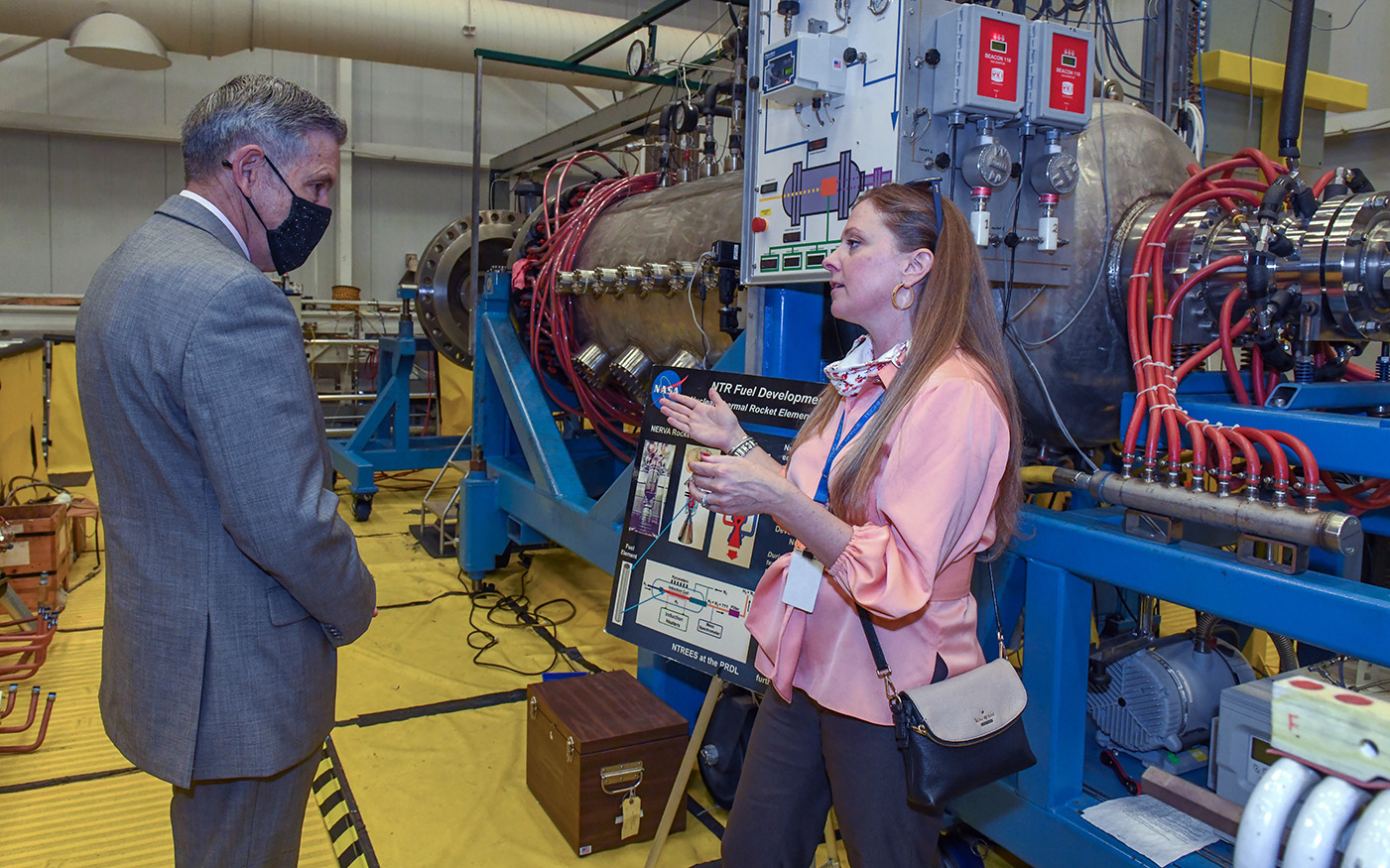
Still, Ise didn’t imagine a career with NASA. Growing up in Joliet, Illinois, she felt her options were limited to working at a chemical plant or in the automotive industry.
“It was just luck that when I started applying for jobs after I graduated from UAH, NASA was hiring and I was able to realize the science fiction dreams I had as a kid,” she said.
Question: How do you encourage teamwork, collaboration, and integration, especially in this unprecedented telework environment?
Ise: I started this job a year ago and we were already out on telework. If it wasn’t hard enough to step into a new role where the team had all been working together for several years, it was even more difficult when I couldn’t meet anyone face to face. The team did an excellent job of holding orientation meetings where I could meet all of the key players and learn what they’ve been doing. Since then, I make sure to maintain a consistent schedule of meetings to provide opportunities for team members to stay connected and better engaged with the whole group. As restrictions on public gatherings have relaxed, we’ve done some social events at local outdoor restaurants. Finally, this fall, we were able to hold two large in-person meetings off-site with 50 people. Everyone who attended these was so excited to be out and seeing people again and they were both very successful events.
Question: How are you managing work-life balance personally and for your team, especially now, more than a year into the COVID-19 pandemic?
Ise: It’s very important to maintain a regular work schedule. I wake up, get ready, and sit down at my computer just like I was going into the office on-site. I take a lunch break and try to finish up the day a reasonable time. It’s easy to get into a trap because you’re home to always be “at work,” which is exhausting and has diminishing returns. To counteract that, I try to keep after-hours work to a minimum, not only for myself, but for my team. Meetings end on time and late-evening emails are avoided if possible. I believe it’s important to maintain this balance when you’re not working a launch campaign or a major milestone review so when you do need that surge capacity, it’s there.
Question: What key partnerships are your team pursuing to help NASA build and develop a sustainable presence on the Moon? Help push the boundaries of science, technology, and/or human exploration?
Ise: Space Nuclear Propulsion has many partnerships across the agency and the government. We have team members at Glenn Research Center, Langley Research Center, Jet Propulsion Laboratory, and headquarters. We have a close working relationship with the Department of Energy, which is managing our fuel developments along with several of the national labs. For the Department of Defense, we have a memorandum of agreement with the Defense Advanced Research Projects Agency to coordinate and provide support to its Demonstration Rocket for Agile Cislunar Operations project, and a partnership with the Special Capabilities Office for fuel development. We have reactor development contracts with three companies: BWXT, General Atomics, and Ultra Safe Nuclear Corporation. We also work with a number of universities, including the Massachusetts Institute of Technology and the University of Alabama in Huntsville. Developing space nuclear capabilities is truly an “all-hands-on-deck” effort.
Question: How does your team honor and demonstrate NASA’s commitment to creating a diverse and inclusive environment?
Ise: Maintaining a diverse team and inclusive environment is very important to my team and me. We actively make an effort to create a more diverse group, such as providing opportunities for leadership to those who have traditionally been underrepresented in these positions. Our partnerships with universities allow us opportunities to give underserved communities exposure to science, technology, engineering, and math research and development. Working with these students and getting to see their excitement is one of the most rewarding parts of the job.
Question: Why do you think your team is successful at staying mission-focused?
Ise: This team is able to stay mission-focused because it is such a unique development project. Even though the potential Mars mission is a long way off, the effort to build a nuclear thermal or nuclear electric propulsion system is an opportunity to work on the cutting edge of materials science, propulsion testing, mission design, and nuclear energy. Since Space Nuclear Propulsion has so many partnerships across the agency and the government, it also affords team members the ability to work with top engineers at the Department of Defense and Department of Energy as well as nuclear reactor companies and colleges and universities. It really feels like you’re a part of a huge, national effort to make the expansion of space nuclear technology a reality.
Boyette, an LSINC employee and the Marshall Star editor, supports Marshall’s Office of Strategic Analysis & Communications.
I am Artemis: Lien Moore
Growing up on the Space Coast of Florida after being evacuated from Saigon during the Vietnam War, Lien Moore always dreamed of working for the American space program. Steadfastly pursuing that dream, Moore has been a NASA systems engineer for nearly 15 years. Embracing her personal experience, Moore has provided so much more than systems engineering expertise to the NASA team and mission. “I’ve lived through huge changes and learned the value of being adaptable,” Moore said. “Now I’m living out my dream job and doing my best to help build and unite teams throughout the agency supporting our return to the Moon.” Moore also founded the Asian Pacific American Connection Employee Resource Group at NASA’s Kennedy Space Center. Today, Moore leads the integration of avionics and software for the Human Landing System program at the agency’s Marshall Space Flight Center, where she is focused on industry technical capability and integration of design solutions with NASA partner programs. She continues to serve the greater NASA community as a member of the Office of Diversity and Equal Opportunity Office’s Asian American and Pacific Islander Advisory Working Group. (NASA)
Roasted, Shredded by Stellar Sidekick
An exhausted star still has some punches to deliver. Astronomers have found that a white dwarf is pummeling a companion object – either a lightweight star or a planet – with incessant blasts of heat and radiation plus a relentless gravitational pull tearing it apart.
Most stars, including the Sun, will become “white dwarfs” after they begin to run out of fuel, expand and cool into a red giant, and then lose their outer layers. This evolution leaves behind a stellar nub that slowly fades for billions of years.
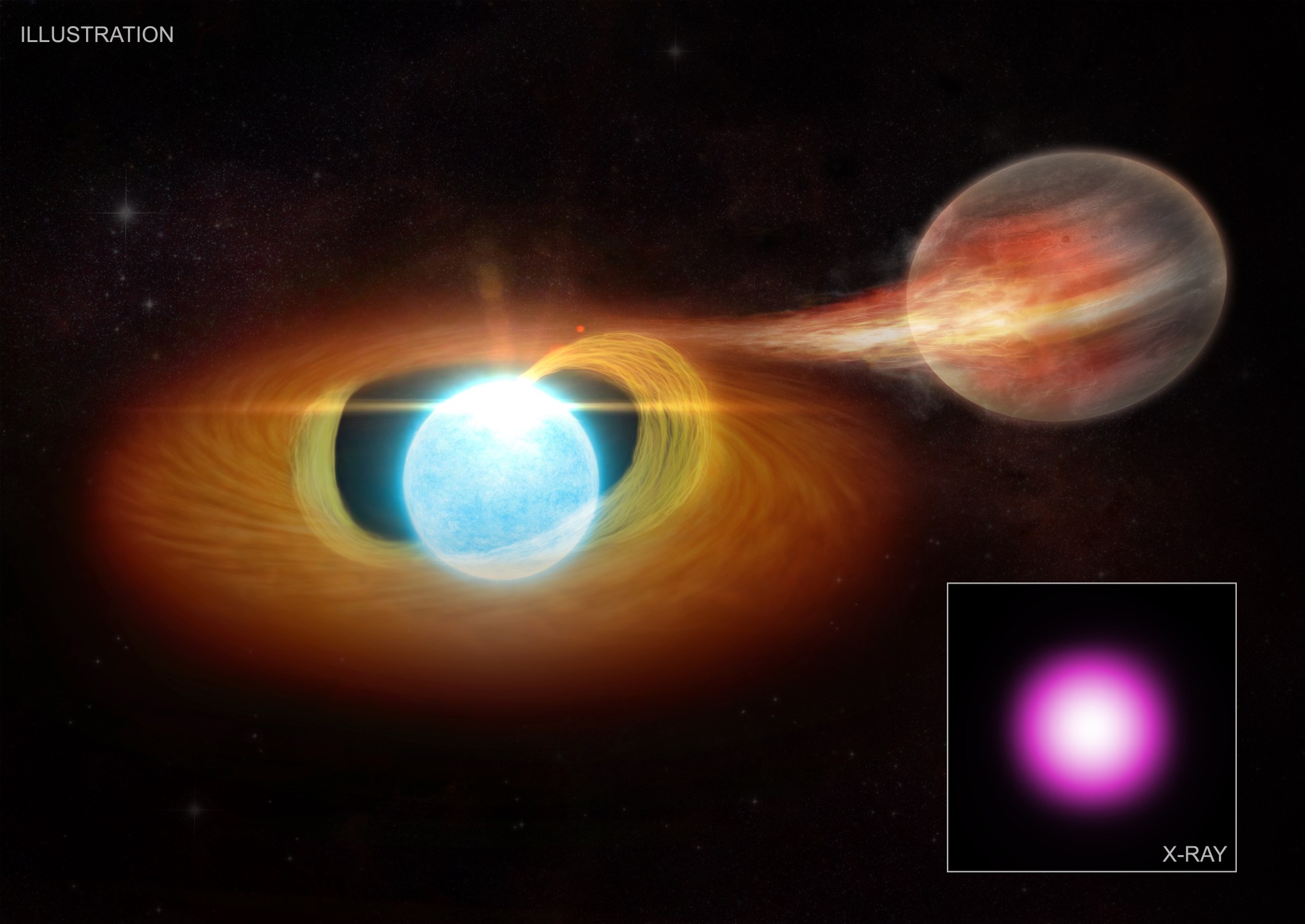
A team of scientists used NASA’s Chandra X-ray Observatory and the European Space Agency’s XMM-Newton to investigate some unusual X-ray activity in three white dwarf stars. Typically, white dwarfs give off low-energy X-rays, which researchers saw in their sample. However, these white dwarfs also had surprisingly bright X-ray emission at higher energies.
One of the white dwarfs stood out among this group. The white dwarf KPD 0005+5106 had high-energy X-ray emission that was regularly increasing and decreasing in brightness every 4.7 hours. This recurring ebb and flow of X-rays indicates that KPD 0005+5106 has an object in orbit around it – either a very low-mass star or a planet.
Material from the low-mass star or planet could be slamming into the north and south poles of the white dwarf, creating a bright spot of high-energy X-ray emission. As the white dwarf and its companion orbit around each other this hot spot would go in and out of view, causing the high-energy X-rays to regularly increase and decrease.
“We didn’t know this white dwarf had a companion before we saw the X-ray data,” said You-Hua Chu of the Institute of Astronomy and Astrophysics, Academia Sinica in Taiwan, who led the study. “We’ve looked for the companion with optical light telescopes but haven’t seen anything, which means it is a very dim star, a brown dwarf, or a planet.”
KPD 0005+5106, located in the Milky Way galaxy about 1,300 light-years from Earth, is one of the hottest known white dwarf stars, with a surface temperature of about 360,000 degrees Fahrenheit. By comparison, the surface of the Sun is about 10,000 degrees Fahrenheit.
“This companion object is about 500,000 miles away from the white dwarf, only about one thirtieth of the distance from Mercury to the Sun,” said co-author Jesús Toala of the National Autonomous University of Mexico. “Whatever this object is, it’s getting blasted with heat.”
The researchers looked at what would happen if this object was a planet with the mass about that of Jupiter, a possibility that agrees with the data more readily than a dim star or a brown dwarf. In their models, the white dwarf would pull material from the planet onto the white dwarf, a process that the planet could only survive for a few hundred million years before eventually being destroyed. This stolen material swirls around the white dwarf, which glows in X-rays that Chandra can detect.
“This is a slow demise for this object that’s basically being ripped apart by constant gravitational forces,” said Martín A. Guerrero, a co-author from The Institute of Astrophysics of Andalusia in Spain. “It would be a very unpleasant place to be.”
The two other white dwarfs were also thought to be solitary objects, but they show similar energetic X-ray emission to KPD 0005+5106. By analogy, this suggests they may also have faint companions, possibly planets.
Microlensing work – which involves looking for the magnification and bending of light from distant sources around intervening objects – led by Joshua Blackman from the University of Tasmania in Australia – has recently shown that a planet can survive the evolution of a white dwarf through its red giant phase. However, the distance between the white dwarf and its planet in that case is much larger than in the one seen by Chu and her team, by a factor of almost 500.
Scientists will likely need to do more theoretical modeling of the evolution of double stars to understand how the planet or low-mass star might end up so close to the white dwarf.
A paper describing these results appeared in The Astrophysical Journal in April 2021 and a preprint is available online. In addition to Chu, Toala, and Guerrero, the authors were Florian Bauer (The Institute of Astrophysics of Andalusia) and Jana Bilikova and Robert Gruendel (University of Illinois in Urbana).
NASA’s Marshall Space Flight Center manages the Chandra program. The Smithsonian Astrophysical Observatory’s Chandra X-ray Center controls science from Cambridge, Massachusetts, and flight operations from Burlington, Massachusetts.
Read more from NASA’s Chandra X-ray Observatory here. For more Chandra images, multimedia, and related materials, visit here.
Agency’s First Planetary Defense Test Mission Highlighted on ‘This Week at NASA’
NASA’s upcoming planetary defense test mission is featured in “This Week @NASA,” a weekly video program broadcast on NASA-TV and posted online.
The Double Asteroid Redirection Test, or DART, mission is targeted for launch no earlier than 12:20 a.m. CST on Nov. 24 from California’s Vandenberg Space Force Base. The mission will help determine if intentionally crashing a spacecraft into an asteroid is an effective way to change the asteroid’s course. Visit here for more about the mission and some online opportunities to share in the excitement of NASA’s first planetary defense test mission.
DART is managed as a project of the Planetary Missions Program Office at NASA’s Marshall Space Flight Center.
View this and previous episodes at “This Week @NASA” on NASA’s YouTube page.




























